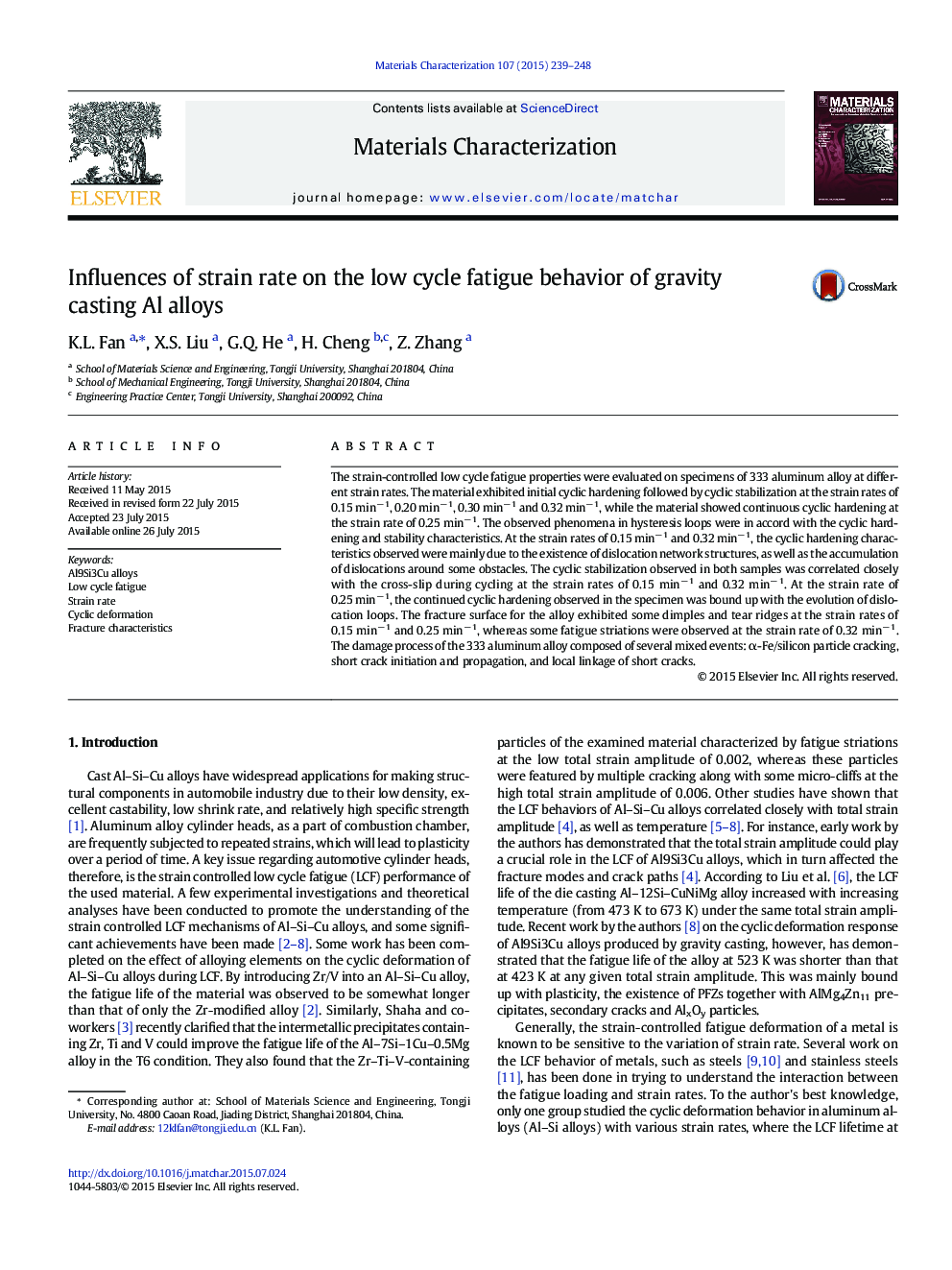| Article ID | Journal | Published Year | Pages | File Type |
|---|---|---|---|---|
| 7970184 | Materials Characterization | 2015 | 10 Pages |
Abstract
The strain-controlled low cycle fatigue properties were evaluated on specimens of 333 aluminum alloy at different strain rates. The material exhibited initial cyclic hardening followed by cyclic stabilization at the strain rates of 0.15 minâ 1, 0.20 minâ 1, 0.30 minâ 1 and 0.32 minâ 1, while the material showed continuous cyclic hardening at the strain rate of 0.25 minâ 1. The observed phenomena in hysteresis loops were in accord with the cyclic hardening and stability characteristics. At the strain rates of 0.15 minâ 1 and 0.32 minâ 1, the cyclic hardening characteristics observed were mainly due to the existence of dislocation network structures, as well as the accumulation of dislocations around some obstacles. The cyclic stabilization observed in both samples was correlated closely with the cross-slip during cycling at the strain rates of 0.15 minâ 1 and 0.32 minâ 1. At the strain rate of 0.25 minâ 1, the continued cyclic hardening observed in the specimen was bound up with the evolution of dislocation loops. The fracture surface for the alloy exhibited some dimples and tear ridges at the strain rates of 0.15 minâ 1 and 0.25 minâ 1, whereas some fatigue striations were observed at the strain rate of 0.32 minâ 1. The damage process of the 333 aluminum alloy composed of several mixed events: α-Fe/silicon particle cracking, short crack initiation and propagation, and local linkage of short cracks.
Related Topics
Physical Sciences and Engineering
Materials Science
Materials Science (General)
Authors
K.L. Fan, X.S. Liu, G.Q. He, H. Cheng, Z. Zhang,
